Times have changed and social evolution makes it possible that if, in the past, access to the throne of Saint Peter was in the hands of a dominant caste made up of families of ancient ancestry, linked to a series of class privileges and economically well off, today it has been democratized that situation and it is no longer the Medici, Orsini, Farnese, Della Rovere, Borghese and other clans who take turns almost exclusively in religious power. However, even in other times there were exceptions and one of the best known is that of Pope Celestine V, a humble hermit who reluctantly accepted his election and barely lasted a few months in that role he hated.
Celestino was evidently the name he chose for his papacy, as he was actually called Pietro Angeleri di Murrone (depending on the source, he also appears as Angelieri, Angelerio and the like, just as Murrone is alternatively presented as Morrone).
Tradition says that he was born in Sant'Angelo Limosano, a town near Isernia, in the Molise region, which was then part of the Kingdom of Sicily. He was between 1209 and 1215, and he was the eleventh child of a large family fathered by a marriage of modest peasants, Angelo Angelerio and Maria Leone.
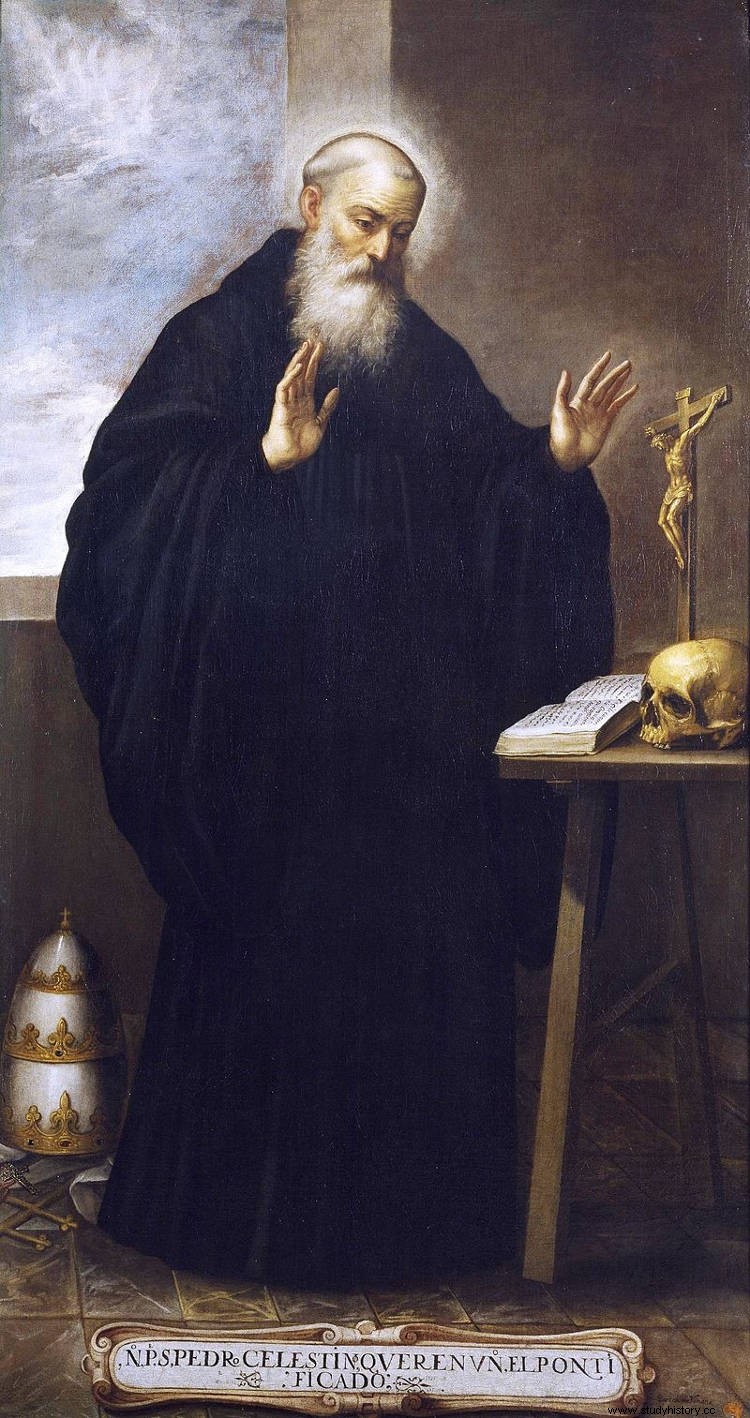
His father died when he was still young, forcing him to take his place in farm work. However, he seemed to be very bright and his mother believed that his child could aspire to something more than this life of hard work and little or no reward. The solution seemed to come when Pietro turned seventeen and confirmed the religious vocation he had always felt by taking the habit at Santa Maria in Faifoli, a Benedictine monastery in the diocese of Benevento. Maria probably thought that, in this way, her son could start an ecclesiastical career according to her ability, but she was wrong; at least at first, since Pietro manifested a marked predilection for asceticism, which led him to leave the monastery in 1239 to retire to a cave and live in solitude dedicated to prayer.
That grotto was located on Mount Morrone, hence the demonym that was left to its tenant forever. However, although he stayed there for five years, it was not going to be something definitive, far from it. It was common for two or three hermits to group together to live together in the same cave, as a result of which others joined them and this ended up giving birth to a new religious community. This was what happened in this case, because Pietro was joined by a couple of companions with whom he moved to another grotto on the Maiella mountain, in Abruzzo, all living in precarious conditions trying to imitate those worn by Saint John the Baptist. .
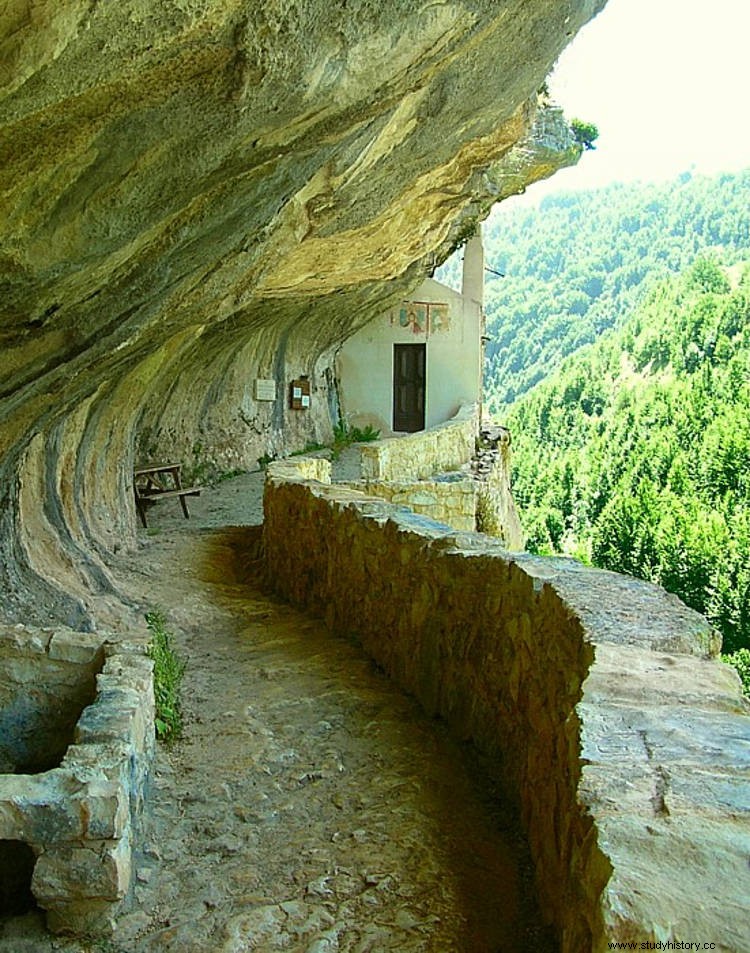
That attracted others and in 1244 they founded the Order of the Holy Spirit, so called because the monks settled in the Ermita del Sancto Spirito, a small temple founded in 1055 by Benedictines from the Monastery of San Benito de Montecassino. As they grew, they added cells around the temple and by 1254 it was sufficiently settled that in 1259 the authorities donated farmland to them and four years later Urban IV issued the papal bull Cum sicut, by which they were incorporated into the Order of Saint Benedict and its rule (although with more severe characteristics). This was accepted by Pietro, who had personally traveled to Lyon to convince the prelate, since it was rumored that he was going to suppress many newly minted orders, following the advice dictated by the Lateran Council (1215) to reduce their number.
The new community was successful, reflected in a rapid expansion that in the future would lead to almost a hundred monasteries in Italy - some even female - and twenty in France. But, despite everything, that did not fill Pietro; when he was already in charge of thirty-six monasteries with nearly six hundred monks, he said enough, delegated the management to a trusted man and resumed his anchorite life, in which he remained for a couple of decades, without imagining that everything was going to change soon.
Two circumstances coincided:on the one hand, strategic needs made the order's headquarters move from Maiella to Abazzia Morronese, in Sulmona; on the other hand, in 1292 Pope Nicholas IV died and the conclave lasted for two years with no way of electing a successor as it was polarized between those who supported the representative of the Colonna and those who supported the Orsini.

Pietro was not unknown to the cardinals and in the face of this situation he was going to be less so because he sent them a letter reproaching them for the situation and threatening them with divine wrath. And, unwittingly, he managed to reach an agreement by inspiring the dean of the College of Cardinals, the elderly Latino Malabranca, to propose a consensus candidate:Brother Pietro Angeleri di Murrone.
Of course, he not only refused but even tried to flee, but he had no choice but to accept his fate when a delegation of cardinals, accompanied by the King of Naples himself and the Prince of Hungary, appeared before him imploring responsibility for their benefit. of all.
And so, that hermit who had tried to flee from the madding crowd was catapulted, despite himself, to the head of the Church in the summer of 1294, when he was already in his eighties. Since the conclave had met in Perugia, he was crowned nearby at Santa Maria di Collemaggio (Aquila), and after the ceremony his first act was to offer a plenary indulgence to all who visited that church at the end of August in any year, what has been called Celestinian Forgiveness -remember that it adopted that name- and it is considered the origin of the jubilee, as it was institutionalized five years later by Boniface VIII. It didn't take long for it to become clear that his election had solved one problem but was going to cause other, perhaps worse ones.
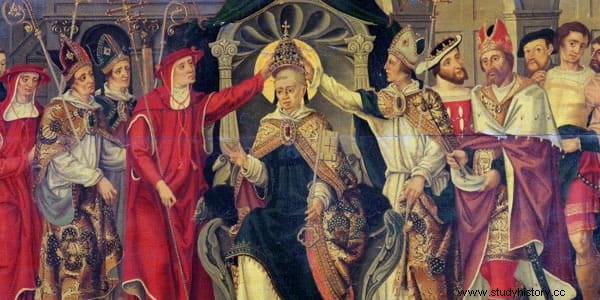
Because that pope was still an ascetic who hated tinsel, which is why he abolished all symbols of power and advocated reorienting the Church to its humble origins, to Christ, demonstrating it by entering its headquarters in Naples mounted on a donkey carrying the Neapolitan monarch himself or by appointing a dozen foreigners (that is, none of them Romans) as cardinals, of whom five were, moreover, simple monks.
The intentions were praiseworthy and were part of a current of the time promoted by the Cistercian abbot Joaquín de Fiore, who advocated introducing evangelical simplicity after a time of jurist and doctrinal pontiffs who defended papal supremacy over all other powers on Earth. . But drastic reforms are often traumatic and not unanimously welcome. In a very short time, Celestino V earned the animosity of those who had acclaimed him.
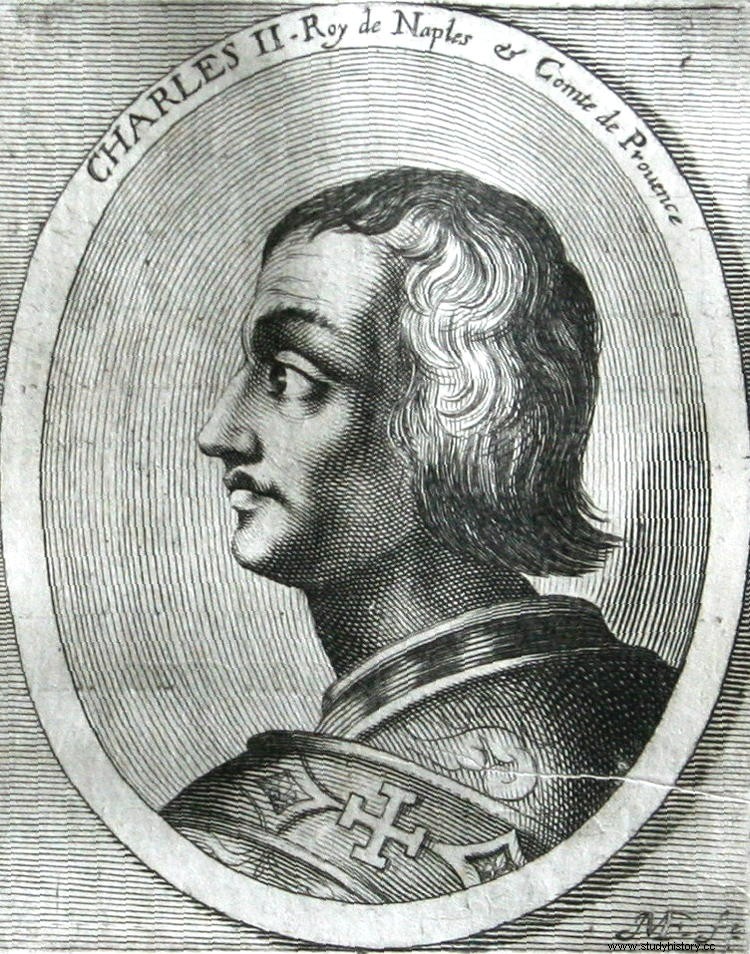
Part of the fault was his own in insisting on taking Naples as his seat instead of Rome. In that kingdom he came under the influence of King Charles II, who cunningly managed him by extracting favorable appointments from him. Thus, the curia began to refuse to approve some measures while others became a dead letter when putting them into practice. The Pope realized that his policy had been counterproductive, undermining his own authority and thus losing the ability to change things. This paradox manifested itself in the attempt of some cardinals to overthrow him and replace him with a kind of triumvirate; It was not consummated thanks to the support that Celestino V received from the Orsini but it did serve to dissuade him from the decisive step that he had to take.
It was none other than resignation. Cardinal Benedetto Caetani, one of the best placed to succeed him, helped him draft a resignation decree that was issued on December 13, justifying it for reasons of health, inability to hold the post and his “longing for the tranquility of the previous life» .
He was not the first but he would be the last pope to resign until Benedict XVI did so in 2013 (Gregory XII would also do so in 1415 but by order of the Council of Constance, in the context of the end of the Western Schism). His pontificate lasted only five months and nine days; the conclave met again a week later and in a single day, as planned, he chose Caetani, who would become Boniface VIII.
Celestino recovered his real name but could not resume the anchorite life, as he wanted. The new pope wanted to return the papal seat to Rome and ordered him to accompany him so that the Neapolitan people would not rebel and the parties that had supported him would remain quiet. Pietro escaped to the Sulmona forest first but was captured when the ship he was fleeing to Dalmatia on was turned around by a storm. He spent the rest of his existence locked up in the castle of Fumone, although a very long sentence was not tried:ten months, since he died on May 19, 1296.
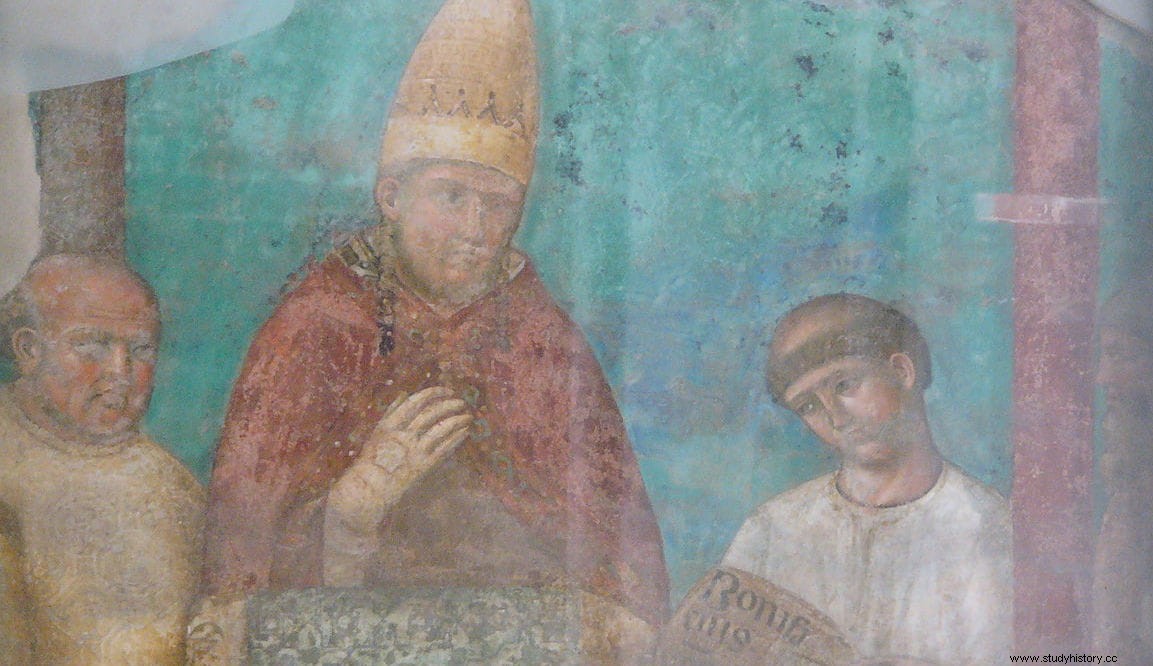
He was buried in Ferentino, although his remains would be transferred to the Basilica of Santa Maria di Collemaggio (unbelievably, they were not lost in the 2009 earthquake), amid rumors of murder accusing Boniface VIII. Upon his death, one of his most bitter enemies, Felipe IV of France, promoted before his successor Clemente V the canonization of Celestino V; For this he had the support of the Colonna, enemies of the Caetani family, to which the Pope belonged.
Finally, that humble religious whose great aspiration was to live modestly in a cave away from everything, was made a saint on May 5, 1313. The Order of the Holy Spirit that he founded would be renamed Ordo Coelestinorum or Order of the Celestines in his honor.
